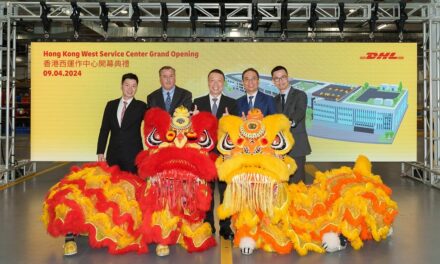
Tiger, Tiger, Burning Bright
James Cartledge explores the explosive growth of e-commerce shipping in the Asia Pacific region, the venue for World Mail & Express in June 2012 With a growing middle class comfortable with the latest innovations in internet technology, rebounding economies and an increasingly sophisticated e-retail sector, the Asia Pacific region is leading global growth in e-commerce.
Sales have been increasing at double digit rates in countries such as Japan and South Korea – even as the traditional retail sector stagnated during the recent global economic downturn.
The region already boasts 44% of the world’s internet users. Developing countries like Thailand and Malaysia are rapidly catching up to the 80% internet penetration levels of the developed world, and China and Indonesia have such vast populations that they already possess huge e-commerce markets.
Goldman Sachs predicts that China will see its e-commerce market value rise from $50bn a year to more than $300bn over the next five years, with forecasts for annual growth of at least 10% over the coming decade.
Within China, the Pearl River and Yangtze River Delta areas are seen as particularly attractive markets. Add in strong growth in e-commerce in Australia, Hong Kong, Malaysia, Singapore and Taiwan and the picture is pretty clear.
Fierce competition between major e-commerce platforms in the region is making it easier and more secure than ever for consumers to shop online, and also for smaller retailers to move to an internet base.
Global brands like Amazon, eBay and Apple are competing with regional heavyweights including China’s Alibaba and Japan’s Rakuten. Meanwhile, shippers are competing hard for their business.
The opportunities are clear for shippers: Australia Post, for example, saw 70% of the 100m parcels delivered in 2010 generated by online shopping. Japan Post now sees three quarters of its biggest express mail customers in the online retail segment.
Japan Post’s President and CEO Shinichi Nabekura told the last World Postal Forum that e-commerce is here to stay, since “the flow of goods cannot be digitised”. He stressed that national posts have a key advantage in the business to consumer space thanks to their ubiquitous delivery services and trusted brands.
The role of the global integrators
In recent months the integrators have established new flight routes to facilitate growing freight volumes in the region, together with investment in ground logistics such as TNT’s Southeast Asia network. Much of this volume growth is driven by e-commerce.
In a report issued last year, Goldman Sachs stated its belief that e-commerce in the Asia Pacific market would follow Amazon’s model of investing in more decentralised logistics networks, using localised warehousing to reduce shipping distances.
Jerry Hsu, CEO of DHL Express Asia Pacific, notes that a particular characteristic of the current boom in e-commerce has been the shift towards business to consumer shipping from the traditional business to business. This brings its own set of challenges.
Shippers have to gear their mindsets towards a residential market where recipients are often unavailable during the working day, and in a highly competitive market the onus is on the shipping companies to find a solution to keep costs down.
“Better access to information online, coupled with aggressive competition, has contributed to the rise in customers’ perceptions and demands of service,” Hsu says. “Customers expect constant and prompt access to certain goods and services, as well as immediate responses from companies that sell them.”
But, while “free shipping” is increasingly becoming expected by e-commerce consumers around the world, Hsu states that there is still demand for premium shipping options, depending on the nature of the item being shipped. “Price is no longer the only factor in purchasing decisions, and many customers are willing to pay for better service,” he says.
Engaging with e-retailers
A key strategy for delivery operators is to partner with e-commerce platforms and e-retailers to provide dedicated services tailored to the demands of online purchasers. For example, DHL has forged relationships with eBay and Google, and UPS formed an alliance last year with Alibaba’s AliExpress wholesale marketplace.
Dedicated support services are now being offered to e-retailers. Japan Post launched a separate division last year dedicated to e-commerce shipping; HongKong Post launched its “eClub” service for online retailers, and a new flat rate shipping service, EC Post, that is particularly designed for Hong Kong based e-retailers to service demand in Mainland China.
Operators are also becoming increasingly sophisticated in their engagement with online retail software. Users of certain online retail platforms can now integrate their websites with shipping services to provide a seamless shopping experience for customers.
Tools like DHL’s XML Services mean that worldwide transportation networks and sophisticated tracking systems can be integrated with a client’s existing online trading system without the need for complex IT engineering.
Software plug-ins designed for e-retail software systems like Magento mean duties and taxes can be automatically calculated and included in transaction pricing. Customs procedures and other paperwork can be kept to a minimum, offering easier entry into the online marketplace for smaller retailers, entrepreneurs and artisan merchants.
Better software has also led to increasing consumer confidence, for example through the more sophisticated payment options now available. Australia Post has been high profile in this area, acquiring secure payment firm SecurePay last winter, and this summer launching a special partnership with PayPal to provide help for small and medium sized retailers to make the move online.
Australia Post Managing Director and CEO Ahmed Fahour says more than half of his business contract customers now have an online presence, and through initiatives like this, the number is expected to grow rapidly.
“Australia Post is working around the clock on a range of initiatives to help make ecommerce more convenient for customers and businesses,” he says.
Internet shopping malls

SingPost has established Clout Shoppe as an internet mall specialising in luxury goods
Going a step further, one of the successful options for postal companies to help retailers find an internet presence is to set up online shopping malls.
It has been happening for a number of years: for example, the Australia Post and Korea Post collaboration Ozmall, and HongKong Post’s ShopThruPost. More recently, there are POS Malaysia’s Postme.com.my and SingPost’s high end Clout Shoppe.
Internet malls create an affordable online home for retailers. For example, POS Malaysia offers a spot for retailers for the equivalent of less than twenty dollars a month, where beforehand it could cost thousands for a company to set up its own e-commerce website.
Consumers love the integrated nature of online shopping and shipping services that these online malls provide. POS Malaysia saw its website traffic leap up from around one hundred visitors a day to more than 2.5m.
“We sent out 1,000 parcels in less than a week, we managed to capture a base of about 140,000 shoppers,” says Marketing Director Pat Wahid. “Most interestingly, the teenagers and young working community have started to give us a different kind of respect in how we run the business and how we have given value to their lives.”
Joanna Soh, Executive Director of SingPost’s Clout Shoppe, says that an added bonus of postal operators running internet marketplaces is that consumers have the benefits of a widespread network of physical retail stores to provide customer service and alternative payment options.
Launched this summer with a focus on luxury branded goods, Clout Shoppe is at the heart of SingPost’s ambitions to grow its e-commerce presence throughout the Asia Pacific region. Later this year, it plans to make shipping available to customers in neighbouring countries such as Malaysia, Indonesia, Thailand and Australia. There is the possibility of similar Clout Shoppes in other fashion hubs of Asia in the near future.
Dr Wolfgang Baier, SingPost’s Chief Executive Officer (International), says: “SingPost already has a regional platform in Quantium Solutions, a mail logistics company present in ten countries in Asia Pacific. Through this platform and our postal network, we will grow our e-commerce and logistics business in the region; this includes expanding Clout Shoppe beyond Singapore’s shores.
Cross border trade
It is not just SingPost eyeing the possibilities that more cross border e-commerce has to offer. Around one in three Asia Pacific consumers that buy online are already making purchases from websites outside their home countries, according to a recent Visa e-commerce survey.
With the dollar and euro recently depreciating significantly against Asian currencies, online purchases from e-retailers based in Europe and North America are much more attractive to Asian consumers. The presence of major manufacturers in Asia Pacific servicing online retail based in western countries also means there is a big demand for shipping items from the region to the rest of the world.
Moves by retailers in those countries, and from international credit card companies, to make cross border retail easier and more cost effective have helped propel demand for international e-commerce.
It is an obvious area for the large integrators, but for the posts the key has been to form alliances with each other as well as with e-commerce platforms. Strong partnerships are now in place between posts in the region, including Japan, Korea, Singapore, Hong Kong and Australia Post.
Partnerships also stretch from Asia Pacific posts out to other posts around the world. The Kahala partnership, for example, involves ten posts working together to improve e-commerce services, not just posts from the region, but also those of the US, Britain, France and Spain.
American websites are the most popular for overseas shoppers in Asia Pacific. Recognising this huge potential, USPS has for the past year been working in a close tri-lateral partnership with ChinaPost to become the preferred shippers for eBay’s Greater China division.
Giselle Valera, Vice President of Global Business at USPS, says the partnership has been “very successful”, allowing USPS to continue growing in the e-commerce space. “We’re now taking that same model that we’ve had with China Post and eBay and we’re trying to replicate that across the region to other countries in the Asia Pacific area that also have an eBay presence,” she reveals.
Marnix Bakker, head of e-commerce partnerships and business development for parcels at bpost international, says that the presence of trusted shipping brands helps consumers in the west to trust in the “genuineness” of the items being purchased from Asia Pacific and to avoid complications with customs when the items arrive in their country.
“A point of concern is the trade of counterfeit items,” he says. “Delays are incurred systematically due to customs issues, as well as the under capacity for providers to get the orders from Asia to the consumers abroad. In order to have a sustainable solution, one needs the cooperation with government and customs authorities at both ends of the logistics chain.” bpost international believes that it is key to have guaranteed uplift at favourable and stable costings for companies in China that wish to export their wares to foreign consumers, Bakker adds.
Conclusion
It is clear that the mail and express industry is matching the tremendous growth in online shopping with an increasingly sophisticated approach to fulfilling that demand, and is also helping to facilitate further growth in coming years.
Important in all this is the partnership approach to e-commerce – between mail and express operators and e-commerce players, giants and minnows – recognising that, as with the internet itself, national boundaries should not stand in the way of the opportunities on offer.
This article appeared in the September 2011 issue of Mail & Express Review.
To get your hands on the quarterly magazine for the global mail and express industry, click here for subscription details »













